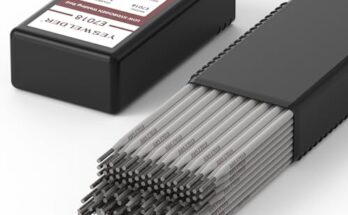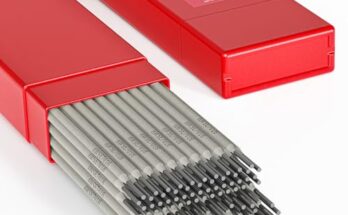When I first heard about gasless MIG welding, I was both intrigued and skeptical. Could it really be as easy and effective as people claimed? After diving in and experimenting, I can confidently say it’s a game-changer, especially for beginners.
If you’re working on a small project at home or tackling a repair job in your backyard, gasless MIG welding offers a straightforward and practical way to get the job done.

If you’re new to welding, gasless MIG welding can feel less intimidating compared to traditional methods. It eliminates the need for external shielding gas, making it simpler and more portable.
This article will guide you through everything you need to know to get started, from understanding the basics to mastering some beginner-friendly techniques.
What is Gasless MIG Welding?
Gasless MIG welding, also known as self-shielded flux-cored arc welding (FCAW), is a type of welding that doesn’t require an external shielding gas. Instead, it uses a special type of wire with flux at its core.
As the wire melts during the welding process, the flux creates a protective gas shield around the weld pool.
This built-in shielding makes gasless MIG welding perfect for outdoor work, where wind and other elements can disrupt traditional welding methods. It’s also a great option for those who want to start welding without investing in a separate gas cylinder.
Why Choose Gasless MIG Welding?
When I first started, one of the things I appreciated most about gasless MIG welding was its simplicity. Here are some reasons why it’s a fantastic choice for beginners:
- No Need for Shielding Gas: You don’t have to worry about buying or transporting gas cylinders.
- Portable and Convenient: Since there’s no external gas involved, it’s easy to take your welding setup wherever you need it.
- Works Well Outdoors: The self-shielding flux makes it ideal for windy conditions.
- Great for Beginners: It’s forgiving of slight mistakes, making it easier to learn.
How Gasless MIG Welding Works
Gasless MIG welding relies on a flux-cored wire that creates its own shielding gas as it melts. This protective gas prevents contamination from oxygen and other elements in the air, ensuring a strong and clean weld.
Here’s a quick breakdown of the process:
- The flux-cored wire feeds through the welding gun.
- As the wire melts, the flux inside vaporizes, creating a protective shield around the weld pool.
- The melted wire fills the joint, forming a strong bond between the two pieces of metal.
Setting Up Your Gasless MIG Welder
Before you start welding, it’s important to set up your equipment correctly. Trust me, taking the time to do this will save you a lot of frustration later on.
Equipment You’ll Need
- A gasless MIG welder.
- Flux-cored welding wire (typically labeled as E71T-11 or similar).
- Protective gear, including a welding helmet, gloves, and a flame-resistant jacket.
- A clean workspace with good ventilation.
Steps to Set Up
- Choose the Right Wire: Select a flux-cored wire that matches your project’s needs.
- Install the Wire Spool: Open the welder’s compartment, insert the spool, and feed the wire through the drive rollers and into the gun.
- Adjust the Polarity: Gasless MIG welding typically requires the welder to be set to DCEN (Direct Current Electrode Negative).
- Set the Voltage and Wire Speed: Refer to your welder’s manual to adjust these settings based on the thickness of the metal.
- Prepare the Metal: Clean off any rust, paint, or debris from the surface of the metal.
Basic Techniques for Gasless MIG Welding
When I first started welding, I found that practicing on scrap metal was incredibly helpful. It’s a low-pressure way to get a feel for the process before tackling a real project. Here are some basic techniques to keep in mind:
Maintain the Right Angle
Hold the welding gun at a 15-20 degree angle, pushing the weld rather than dragging it. This helps ensure good penetration and a clean weld.
Watch Your Speed
Move the gun steadily along the joint. Too fast, and the weld will be weak. Too slow, and you risk overheating the metal.
Keep a Steady Hand
Consistency is key. A steady hand helps maintain an even bead and prevents irregularities.
Challenges and How to Overcome Them
Like any skill, gasless MIG welding comes with its own set of challenges. Here are some common issues I’ve encountered and how to fix them:
Spatter: Flux-cored wires produce more spatter than solid wires. To minimize this, adjust your settings and clean the metal surface thoroughly.
Porosity: If the weld has small holes, it could be due to dirty metal or incorrect settings. Make sure the surface is clean and your wire speed is properly adjusted.
Burn-Through: Thin metals can be tricky to weld without burning through. Lower the voltage and wire speed for better control.
Choosing the Right Flux-Cored Wire
Not all flux-cored wires are created equal. The type of wire you choose depends on the material you’re welding and the conditions you’re working in.
Common Types of Flux-Cored Wire
- E71T-11: Great for general-purpose welding and works well in all positions.
- E71T-GS: A good option for beginners and light-duty projects.
- Stainless Steel Wires: Designed specifically for welding stainless steel.
Comparison of Gasless MIG Welding vs Traditional MIG Welding
| Feature | Gasless MIG Welding | Traditional MIG Welding |
|---|---|---|
| Shielding Gas Needed | No | Yes |
| Best For | Outdoor projects, portability | Indoor projects, clean welds |
| Spatter Level | Higher | Lower |
| Ease of Use | Beginner-friendly | Requires more setup |
Tips for Successful Gasless MIG Welding
If I could go back and give myself advice when I was just starting out, these tips would top the list:
- Practice Makes Perfect: Spend time practicing on scrap metal before starting a real project.
- Keep the Gun Clean: Regularly clean the nozzle and tip to prevent clogs.
- Use the Right Settings: Refer to your welder’s manual to adjust the voltage and wire speed based on the material thickness.
- Invest in Quality Wire: Cheap wire can lead to inconsistent results and more spatter.
Advantages of Gasless MIG Welding
- Portable: No need for heavy gas cylinders.
- Simple Setup: Easier to get started compared to traditional MIG welding.
- Great for Outdoors: Works well in windy conditions.
- Affordable: Generally more budget-friendly for beginners.
Disadvantages of Gasless MIG Welding
- More Spatter: Requires extra cleanup compared to traditional MIG welding.
- Limited for Thin Metals: May be challenging to use on very thin materials.
- Not as Clean: The welds might not look as polished as those from traditional MIG welding.
Conclusion
Gasless MIG welding is an excellent option for beginners looking to dive into the world of welding. Its simplicity, portability, and versatility make it a practical choice for DIY projects, repairs, and even small-scale professional work.
While it may produce more spatter and require a bit of cleanup, the convenience it offers more than makes up for it.
If you’re just starting out, I encourage you to give gasless MIG welding a try. With the right equipment, a little practice, and the tips shared here, you’ll be creating strong, reliable welds in no time. Welding is a skill that grows with you, and gasless MIG welding is a fantastic place to start.
FAQ
What is the difference between gasless MIG welding and traditional MIG welding?
Gasless MIG welding doesn’t require external shielding gas, while traditional MIG welding uses a gas cylinder for shielding.
Can gasless MIG welding be used outdoors?
Yes, it’s ideal for outdoor projects since it’s not affected by wind.
What type of wire is used for gasless MIG welding?
Self-shielded flux-cored wire, such as E71T-11, is commonly used for gasless MIG welding.
Is gasless MIG welding good for beginners?
Absolutely! It’s simple to set up and forgiving of minor mistakes, making it perfect for those new to welding.
What materials can I weld with gasless MIG welding?
It works well on mild steel, but you can also find flux-cored wires for stainless steel and other metals.


